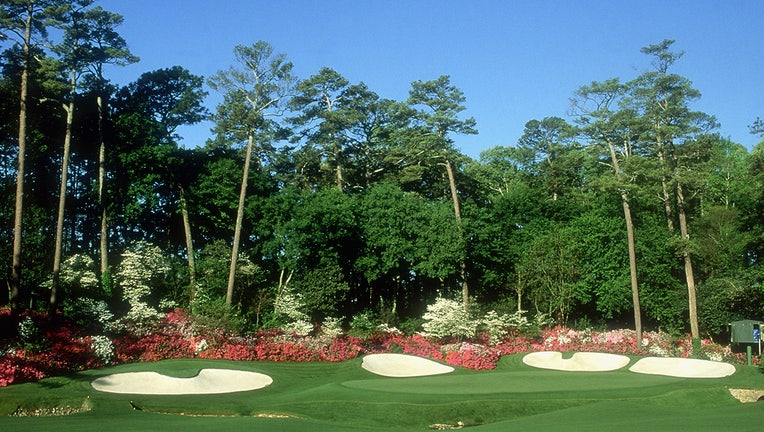Masters makes modifications to 13th hole on golf course

General view of the 13th hole taken during the 2000 US Masters held in April, 2000 at the Augusta National Golf Club, in Augusta, Georgia, USA. (Photo by Stephen Munday/Getty Images)
AUGUSTA, Ga. - After years of negotiations, a land acquisition deal and millions of dollars, the Masters finally made modifications to what historically has been the easiest hole on the golf course.
No. 13, the par-5 leaving Amen Corner, has a new look.
The tee box has been moved back 35 yards to make the hole more challenging and now it's up to the players whether they will go for the glory as they have been or play it safe.
Now, 35 yards may not sound like very far but Augusta National Golf Club went to great lengths to make it happen.

A look at Phil Mickelson's golfing career
Phil Mickelson is considered one of the greatest golfers of all time.
Augusta National needed a land acquisition six years ago from neighboring Augusta Country Club — close in name and location but not connected in any way — to get started.
To make it happen, Augusta National needed to acquire the ninth hole of Augusta Country Club, something they've wanted to do for years. The cost of the land purchase has never been made public, although Golfweek reported in 2016 it would be upward of $25 million. It also meant Augusta National having to foot the bill to relocate and rebuild the country club’s former ninth hole.
But they felt it was needed.

Lightning strikes flagstick at hole 7 on North Carolina golf club
A lightning bolt struck the flagstick on hole #7 at the Eagle Creek Golf Club in Moyock, N.C., this week, leaving an incredble pattern in the green.
Masters Chairman Fred Ridley said Wednesday the modifications will help "restore the element of risk and reward" that was intended in the original design of the hole.
The tee box is nestled between trees, rows of flowers and a rock wall in what is a picturesque scene on a hill. The change increases the overall distance of the hole to 545 yards — more in line with par 5s at other major tournaments — because there hadn't been much risk for players.
In fact, players have feasted on No. 13.
RELATED: The Masters: Why the green jacket is important
Tiger Woods is 58-under par for his career on the hole nicknamed "Azalea." Phil Mickelson is 81 under.
The average score on No. 13 was 4.77 at the 2022 Masters, by far the lowest in relation to par of any hole on the course.
The added length means fewer golfers will be able to shape their drives around the trees on the left side of the dogleg, thus setting up a longer and more difficult second shot — creating a potentially perplexing dilemma on whether to go for the green or lay up.
"The days of me hitting a 3-wood and an 8-iron there are long gone," Woods said.
The need for a change became evident in the final round of the 2014 Masters, when the left-handed Bubba Watson cut his drive around the trees and was left with a simple 150-yard wedge over Rae's Creek to the hole. Watson easily found the green and made a two-putt birdie en route to winning his second green jacket.
That type of scenario is unlikely to unfold this week, particularly given the rain in the forecast which will only make the hole play longer.
Dustin Johnson and Xander Schauffele are among several golfers who plan to lay up rather than going for the green.
"It puts you in that no man’s land," Schauffele said. "... It’s kind of a no brainer honestly. You just lay up. There’s not much to it."
But there's no doubt, some big hitters will still be tempted to go for the green.
For better or worse, the gambling nature of how players approach the 13th hole led to many major momentum swings in past Masters. Whether the modifications will impact the drama — particularly on Sunday — remains to be seen.
Ridley said, if anything, it'll only add to the intrigue.
"I look forward on Sunday to having someone in competition with a 3- or 4-iron in their hand or even a hybrid hitting their shot into the 13th hole rather than an 8-iron," Ridley said. "I think on balance it’s going to prove to be the right decision."
___
AP golf: https://apnews.com/hub/golf and https://twitter.com/AP_Sports

